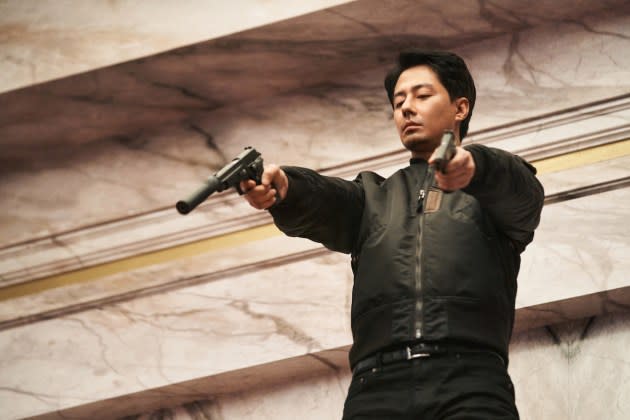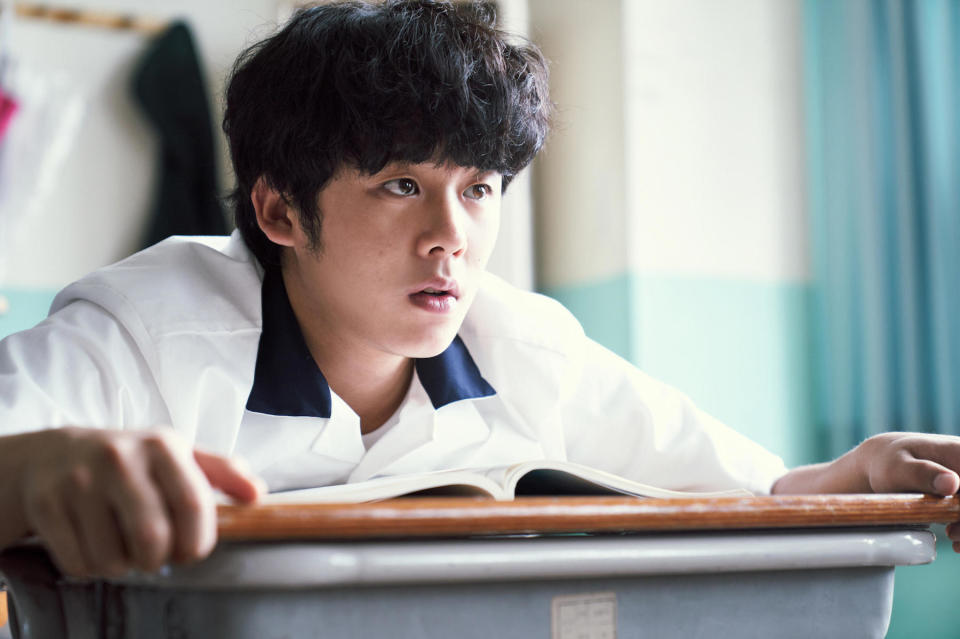‘Moving’ Is the Best Superhero Series on TV Right Now

Moving (무빙), a South Korean drama about superpowered teens and the superpowered parents trying to protect them, made headlines last month when it became Disney+ and Hulu’s most-watched K-drama of all time. In Korea, Japan, Southeast Asia, Hong Kong, and Taiwan, Moving has become the streamers’ most-watched series, full stop — yes, it beat out series that hail from the Star Wars and the Marvel Cinematic Universes. The series is not only distributed but also produced by Disney, and the media conglomerate invested a hefty chunk of change to make the multi-generational superhero saga fly. In fact, Moving is reportedly the most expensive K-drama of all time, with a total budget of over 60 billion Korean won, or roughly $45 million. This works out to about $2.25 million per episode.
When broken down across all 20 episodes, the series’ budget is comparable to or even a little less than what Moving director Park In-je had to work with for the second season of Netflix’s zombie historical drama Kingdom, which was only six episodes.
More from Rolling Stone
How to Watch the 2023 iHeartRadio Music Festival: Live Stream the Performances Online for Free
'Reservation Dogs' Taps Ethan Hawke for Powerful Penultimate Episode
Check Into 'The Continental': How to Watch the 'John Wick' Prequel Series Online
“Because our story deals with supernatural powers, [with] all of the VFX-related budgeting, we had to be very cost-efficient,” Park tells Rolling Stone. “We made sure we were allocating that budget in the most efficient way possible.”
Over 60 VFX studios across nine countries worked on the 7,000 CGI shots used in the series. (For reference, Avengers: Endgame includes 2,700 VFX shots.)
“I have never done a project that required as much CGI as this,” Park said in a behind-the-scenes featurette.
While $45 million is still a lot of money in the context of South Korean TV production — which has seen an increase in average budget since U.S.-based streamers like Netflix, Apple TV+, and Disney+ entered the region — it doesn’t hold a candle to America’s highest-budgeted dramas. Disney’s MCU dramas reportedly cost up to $25 million per episode, while The Mandalorian runs around $15 million per episode. On the broadcast TV side, The CW’s first season of DC’s Superman & Lois (which films in Canada) reportedly cost about $6.3 million per episode to make, while a scaled-back third season cost about $5 million per episode. Moving’s budget is comparable to the budget of a mid-range broadcast superhero drama, such as The Flash or Arrow from the now mostly-defunct Arrowverse.
In this context, what director Park and his team (including co-director Park Youn-seo) were able to achieve in Moving is particularly impressive. The webtoon-adapted series, which concluded its 20-episode first season on Wednesday, follows a wide range of superpowered characters across different settings, including diverse time periods.
“I think having the limited or lower budget compared to those American superhero genres actually worked in our favor,” says Park. “Because, if we wanted to emulate that quality that we see in things like Marvel, it meant that we needed to be creative.”
Most episodes of Moving contain some kind of major stunt, action sequence, or fight between two superpowered characters. An invincible assassin sent by the U.S. government faces off against a company manager with superstrength in an office tower. A city bus driver with the ability to generate electricity takes his passengers on a breathless race through Seoul traffic to keep a superpowered North Korean spy from attacking. A spy with the ability to fly tries to save a flight from a terrorist attack by knocking on the cockpit’s window mid-flight. The sequences are effectively and creatively realized, usually maintaining the kind of visual logic that has become less tangible in big-budget American superhero fare.
It helps that Moving has a good story featuring fully realized characters to hang its action on. Amidst all of the impressive action sequences, when asked to choose a favorite, Park opts for a quiet one, completely devoid of violence. In Episode Seven’s “The Stranger,” teen protagonist Kim Bong-seok (Lee Jung-ha) learns to fly. Previously, the character had lived his life afraid to try. From the time he was small, Bong-seok’s mother loaded him down with weights and fed him large portions to keep him heavy, rightfully afraid her son’s abilities would make him a target. But Bong-seok is growing up and he wants to be able to use his abilities to keep the people he cares about safe. He wants to know what he is capable of. So, he puts on his bright yellow puffer jacket, goes onto the dimly-lit path by his home, and lets himself try.

It’s awkward, arms flailing and yells of effort released into the sleepy night. Bong-seok bangs into signs and splashes his feet and hands in a river as he flies unintentionally low over it. Sometimes, his efforts look like swimming, and other times they look like falling, but, as the triumphant music swells, Bong-seok finally gets it. He soars.
“If we could call that action, that would be my first pick,” says Park. “I think that that was the scene, for both me and all of our crew, that was the scene that really moved our hearts.”
It’s a fitting choice for a show that, in the midst of all the superpowered action, never once forgets its characters, Park first received the offer to work on Moving after wrapping Kingdom, when he was working on his own feature film script and just after his daughter had been born.
“I was really moved by the family story,” explains Park, referring to the parallel, interlacing stories of parents and their children at the heart of the South Korean drama. “When we tried to approach Moving, [we knew] it had to be different from how American superheroes are. Firstly, because of the budget — I mean, we weren’t able to do [what Marvel does]. But also because our basic approach to the heroes in Moving was that they are very grounded and very realistic people.”
The mandate to keep Moving’s superheroes grounded was integrated across departments.
“[The show] portrays superpowers used by ordinary people,” production designer Chae Kyoung-sun told Disney in a promotional featurette. “We designed the sets hoping to create spaces that would feel real.”
It took six to eight months to complete the designs for the main spaces, which stretch across the last few decades in Korean history up to the present-day. For series composer Dalparan, who previously worked with Park on Kingdom Season Two, moments of reality were incorporated into the series’ main theme, which he says is all about love.
“This series shows that normal people can become heroes,” offers Dalparan. “So, for the soundtrack for Moving, I focused on capturing little sounds and melodies that people normally ignore and turning them into beautiful music.”
The collaborative efforts, helmed by Park, is better than anything American superhero storytelling has produced in the past few years. It’s a layered, thoroughly Korean tale of sacrifice and superheroes that includes moments of international politics and war, as well as high-stakes action, but is only ever really about a relatable longing for domestic quietude.
“Working on Moving has been a healing process for me as well,” Park reflected. “There are scenes that made me think of my family and moments that portray what love means.”
Best of Rolling Stone

